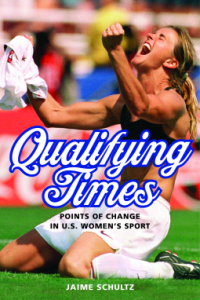 Qualifying Times talks about the evolution in Women’s Sports and what certain things were considered a point of change. Things that don’t seem to be significant now – such as a ponytail and what women wore to play tennis in. (Which now are a bit more provocative than the outfits that originally were considered a “big deal”) It focuses on items such as a sports bra and the tampon – which were also big deals in the beginning but now just kind of come with the territory. Certainly an interesting read and it is amazing what things were considered big issues at the time and are now just normal and everyday way of life things.
Qualifying Times talks about the evolution in Women’s Sports and what certain things were considered a point of change. Things that don’t seem to be significant now – such as a ponytail and what women wore to play tennis in. (Which now are a bit more provocative than the outfits that originally were considered a “big deal”) It focuses on items such as a sports bra and the tampon – which were also big deals in the beginning but now just kind of come with the territory. Certainly an interesting read and it is amazing what things were considered big issues at the time and are now just normal and everyday way of life things.
I received a free e-copy of this book in order to write this review. I was not otherwise compensated.
About the Book
This perceptive, lively study explores U.S. women’s sport through historical “points of change”: particular products or trends that dramatically influenced both women’s participation in sport and cultural responses to women athletes.
Beginning with the seemingly innocent ponytail, the subject of the Introduction, scholar Jaime Schultz challenges the reader to look at the historical and sociological significance of now-common items such as sports bras and tampons and ideas such as sex testing and competitive cheerleading. Tennis wear, tampons, and sports bras all facilitated women’s participation in physical culture, while physical educators, the aesthetic fitness movement, and Title IX encouraged women to challenge (or confront) policy, financial, and cultural obstacles.
While some of these points of change increased women’s physical freedom and sporting participation, they also posed challenges. Tampons encouraged menstrual shame, sex testing (a tool never used with male athletes) perpetuated narrowly-defined cultural norms of femininity, and the late-twentieth-century aesthetic fitness movement fed into an unrealistic beauty ideal.
Ultimately, Schultz finds that U.S. women’s sport has progressed significantly but ambivalently. Although participation in sports is no longer uncommon for girls and women, Schultz argues that these “points of change” have contributed to a complex matrix of gender differentiation that marks the female athletic body as different than–as less than–the male body, despite the advantages it may confer.
Jaime Schultz is an assistant professor of kinesiology and women’s studies at Penn State University.